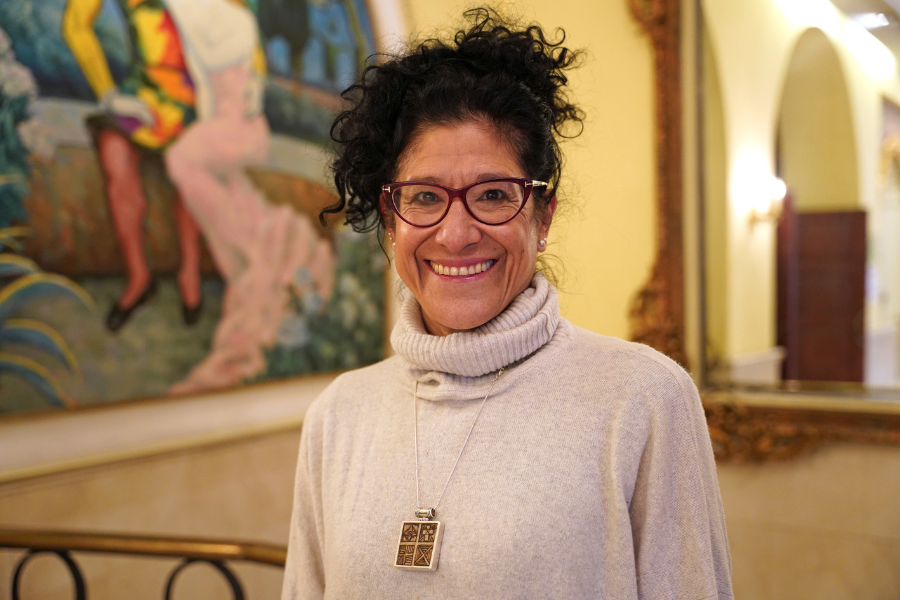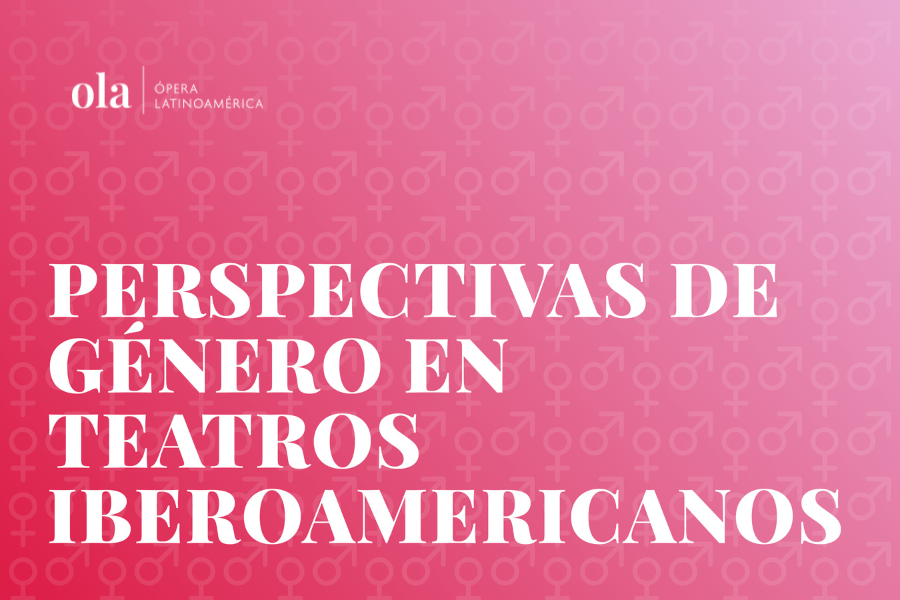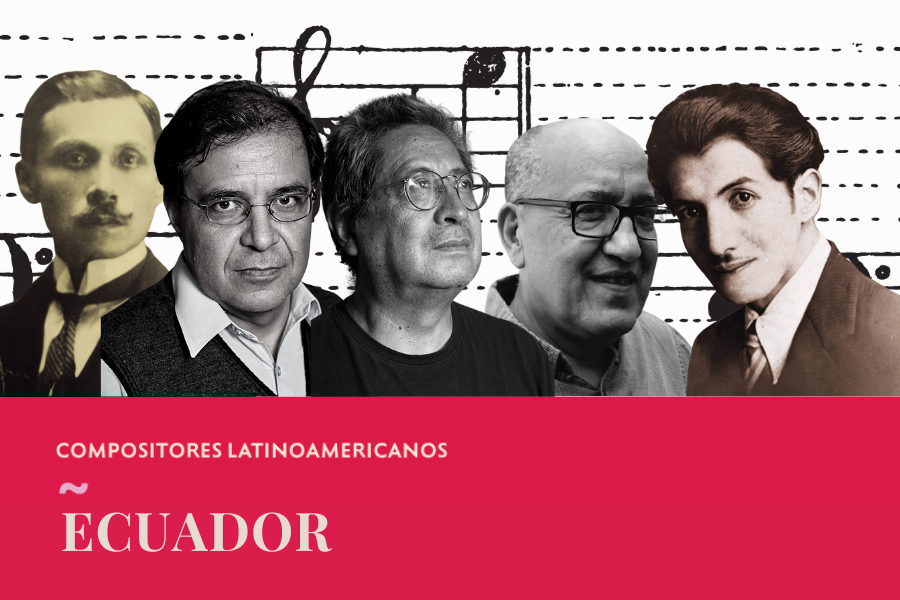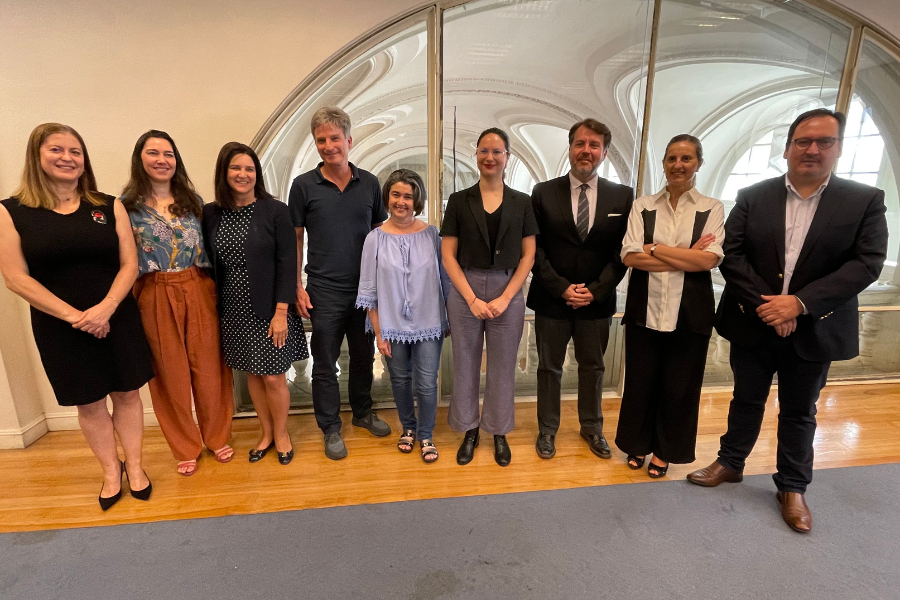The Teatro Nacional Sucre (Ecuador) is the new member of Ópera Latinoamérica

One of the oldest opera houses in Latin America, the Teatro Nacional Sucre opened its doors in 1886 and since then has established itself as the most prestigious stage in Ecuador. Currently, the theater is managed by the Fundación Teatro Nacional Sucre, an entity dependent on the Quito council and which since 2003 has been in charge of producing, executing and disseminating performing and musical arts in the Ecuadorian capital and other territories of the country. In this interview, Jossy Cáceres, executive director of the foundation, addresses the history of the theater, the preservation of its heritage and the different strategies they develop to get closer to the public.
Between Guayaquil and Flores streets, in the heart of Quito’s central district, is an icon of Ecuadorian cultural life and history. With its Italian style, neoclassical architecture, columns and ornamentation, the Sucre National Theater stands white and captivating, a common sensation when touring the historic center of Quito.
The theater, inaugurated in 1886, which makes it one of the oldest on the continent, has now joined the Latin American Opera network. “We are interested in being part of the network of theaters and opera professionals, to share experiences and learn from sister theaters in Latin America,” says Jossy Cáceres, executive director of the Fundación Teatro Nacional Sucre, the entity that manages the theater.
The program of the Teatro Nacional Sucre currently includes an extensive offer of artistic shows, among which are symphonic and popular music concerts, musicals, operas and zarzuelas. “Great artists such as Philip Glass, José Carreras, Charles Bradley, Segundo Cóndor, Daniel Hope, María Pagés or John Zorn have passed by,” says Jossy Cáceres.
From the Plaza de las Carnicerías to the heart of Quito culture
Between the 16th and 18th centuries, the place where the Sucre National Theater is currently located was known as the Plaza de las Carnicerías, a site where several of Quito’s slaughterhouses, pantries and meat stores were located.
Already in 1867, the square was converted into a theater space. In 1879, the site was allocated for the construction of the theater, whose architectural design was in charge of the German Francisco Schmit and whose construction was completed in mid-1886. The inauguration took place on November 25 of that same year, with the presentation of the pianist French Captain Voyer, the Artillery Band and the singers Baldassari and Aymo de la Torre, who interpreted the National Anthem, accompanied by the National Orchestra conducted by Aparicio Córdova.
Throughout the 20th century, the theater underwent different interventions to preserve its heritage. In 1998, the Municipality of Quito intervened to help the building and, later, in 2003, the Fundación Teatro Nacional Sucre (FTNS) was created, an institution that since then has been in charge of the administration of the theater and other spaces such as the Teatro México , the Variety Theater and the Mama Cuchara Cultural Center.
Currently, the foundation is led by Jossy Cáceres, a choreographer, contemporary dance teacher, dancer and cultural manager who took over as director in November 2021. During her career, Cáceres has been active in the independent dance scene in Ecuador through teaching, creating and co-producing events. “The FTNS has a participatory management model through public calls for the application of artistic and cultural projects so that they integrate the annual programming of its spaces”, she explains.
Read the full interview with Jossy Cáceres below.
Why did the Teatro Nacional Sucre decide to join Ópera Latinoamérica?
The Fundación Teatro Nacional Sucre (FTNS) is an institution committed to cultural production. Since its creation in October 2003, it has been in charge of producing, executing and disseminating the performing and musical arts in the Metropolitan District of Quito and Ecuador.
Our annual programming has a permanent season of lyrical productions that include operas, musicals and zarzuelas. With the aim of strengthening our commitment to the lyrical art in the country and the region we are interested in, it is part of the network of theaters and opera professionals, to share experiences and learn from sister theaters in Latin America.
What place does theater have in the cultural life of Quito?
The Teatro Nacional Sucre is one of the most active and dynamic cultural spaces in the capital of Ecuador. It is a heritage building of neoclassical architecture that was inaugurated in 1886 and since then it has become an iconic stage in Quito where great artists such as Philip Glass, José Carreras, Charles Bradley, Segundo Cóndor, Daniel Hope, María Pagés have performed. or John Zorn.
In addition, it is home to emblematic festivals of the city such as Ecuador Jazz, the Fiesta Escénica or the International Festival of Sacred Music. Throughout the year it has a permanent and diverse program that covers different artistic disciplines such as music, theater, dance or opera.
The Teatro Nacional Sucre is one of the oldest theaters in Latin America and not only great works of the scenic or musical arts have passed through it, but it has also hosted important events in Ecuadorian politics and society. How is this historical and patrimonial baggage of the theater sustained? What (or who) does the maintenance depend on?
The historical and patrimonial baggage of the theater is supported on the one hand by the work of the musicians, technicians and administrative team that make up the FTNS, but also with the permanent support of the public of the city that attends and keeps this stage alive during each performance. . In addition, it is important to mention that the economic maintenance of this space is carried out thanks to the Municipality of the Metropolitan District of Quito and the self-management resources generated by the management of the FTNS from which the contribution of the private company that believes in the importance of the contribution of art and culture in the life and social welfare of the city.
How do you approach the different audiences in the community? Do you have specific projects for training, education, dissemination, innovation, etc.?
The way in which we approach the community is with a broad and collaborative programming that seeks to integrate the diversity of audiences that exist in the city.
With the aim of encouraging cooperation with cultural managers and artists in the city, the FTNS has a participatory management model through public calls for the application of artistic and cultural projects to integrate the annual programming of its spaces.
Regarding the training and education of new audiences, the FTNS develops the projects Escenario Joven, Encuentros con la Comunidad, and Concertos Didácticos that have the mission of motivating and bringing the performing arts closer to girls, boys, and adolescents in the city, through of free access functions for schools and colleges in the city.
It should be noted that the FTNS manages eight musical artistic casts that are: Quito Metropolitan Symphonic Band, Andean Instruments Orchestra, Quito City Mixed Choir, Quito Guitar Ensemble, Lyric School, Yavirac Group, Youth Choir and Children’s Choir, with which have approaches in territory in different sectors of the Metropolitan District of Quito and other places in the country, observing the right of democratization of art and culture.
How is the lyrical program of the Teatro Nacional Sucre projected for this 2023? What productions or lyrical activities can you highlight?
The FTNS in this 2023 within the annual season of Theaters and under the lyrical line will develop 2 great proposals, one of an operatic composition of nationalist style based on three traditional legends of Quito called Quito Triptych; considering that myths and legends make up an important part of the cultural identity of peoples; and in this particular case, the three legends, El gallito de la Catedral, San Antonio de Cabeza and Cantuña that are an integral part of Quito culture.
The libretto and music is defined in short opera formats between 30 and 50 minutes long. The three resulting operas make up the Triptych, with a total duration of approximately two hours and thirty minutes (including the breaks between acts and operas); whose musical style, apart from the necessary differences in character that dramaturgy implies, has as its unifying theme the use of sound materials typical of Ecuadorian music, reworked with symphonic and vocal concepts typical of the operatic genre, seeking a language that, without making excessive concessions, be understandable to our average audience.











